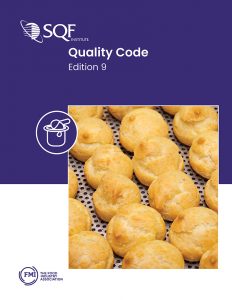Introducing the NEW SQF Edition 9 Guidance Documents
By LeAnn Chuboff, VP of Technical Affairs
 The complimentary Edition 9 Guidance Documents are now available for download. We structured the Edition 9 Guidance Documents so you and your team can have an an optimized approach to understanding major elements in the SQF Codes. Continue reading to learn more on how to utilize the Edition 9 Guidance Documents.
The complimentary Edition 9 Guidance Documents are now available for download. We structured the Edition 9 Guidance Documents so you and your team can have an an optimized approach to understanding major elements in the SQF Codes. Continue reading to learn more on how to utilize the Edition 9 Guidance Documents.
Download Edition 9 Guidance Documents
Purpose and Scope of the SQF Guidance Documents
The purpose of the SQF Guidance Document series is to assist sites with designing, developing, documenting, implementing, and maintaining an SQF Food Safety System using the SQF Food Safety or Quality Codes.
The guidance documents are topic-specific and provide direction on the intent of the Code requirements identified within the document. This encourages the user to look at the Code requirements as programs supporting a systems approach versus a checklist approach. Topic-focused guidance also allows SQF to be more flexible and timelier in developing new guidance for additional system elements or emerging issues.
Guidance is intended to support the SQF Codes but does not replace it. It is not an auditable document, nor is it definitive and applicable in every situation. Sites, consultants, trainers, and auditors are required to understand the risks in a given industry sector and are able to apply the intent of the SQF Codes to effectively control those risks.
How to Use the SQF Edition 9 Guidance Documents
The guidance is to be used a resource to better understand and interpret the SQF Code requirements.
The guides should be used as an evolving tool with the user updating knowledge with additional learnings, industry guidance, and relevant information to a particular industry scope.
Examples how the guidance can be used:
- Interpretation guide
- Internal audit tool
- Enhance in-house training
- Supplement for external training
Format of the SQF Edition 9 Guidance Documents
Each guidance document is titled with the SQF Code topic and includes the date the guidance document was developed or revised. The following information is contained in each guidance document:
- Definition: The definition will be from the SQF Code Glossary found in Appendix 2.
- Applicable Code Requirements: Reference to the SQF Code requirements that are impacted by and affect the topic. The SQF Code requirements are inter-related, and this section identifies those Code requirements that are relevant to the topic.
- Review Glossary Terms: The SQF Code Glossary found in Appendix 2 is a helpful resource in understanding the Code terminology. Additional glossary terms to look up will be cited in this section.
- Implementation & Audit Guidance: This section will include the interpretive comments and include suggestions of what could be done by the site to document and implement this topic. This information is not considered exhaustive and may not apply in every situation. It is meant to provide guidance and interpretation.
- RIO Road to Audits (Records, Interviews, and Observations): Included in this section is a table that outlines the records, interviews and observations that would assist in preparing, implementing, and reviewing the SQF Code topic. This is not an exhaustive list and should be used as a working document by the user (e.g., site, auditor, consultant, trainer) as they move through their food safety journey.
- Additional References: Links to books, websites, documents, templates, webinars, etc. are included in this section to provide additional resources on the topic. It is by no means and official or exhaustive list.
Recent Blog Posts
The FMI Foundation, in partnership with SQFI, awarded 19 scholarships from 152 applications for the 2025-2026 Food Safety Auditing Scholarship program.
Private brands in the grocery industry are experiencing significant growth, evolving from budget alternatives to strategic assets that drive customer loyalty and distinguish retailers.
Recall prevention means embedding food safety throughout your operations so those failures never reach the customer.




